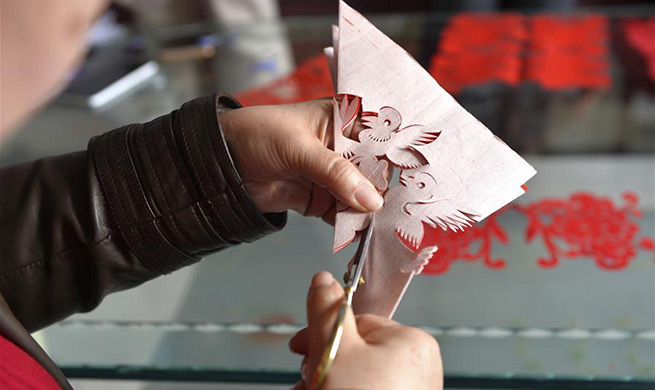CHICAGO, Jan. 10 (Xinhua) -- Researchers at Washington University School of Medicine in St. Louis have figured out a key step in the transmission of antibiotic resistance from one Acinetobacter bacterium to another, thus opening up a new strategy to safeguard the ability to treat bacterial infections with antibiotics.
Acinetobacter strains carry the genetic blueprints for drug resistance on small loops of DNA called plasmids that come in two sizes. Big plasmids, which are prone to accumulating ever more antibiotic-resistance genes, carry the genetic instructions to build a needle-like appendage to insert copies of themselves into nearby bacteria. Small plasmids, which contain resistance genes against a single but important group of antibiotics known as carbapenems, lack their own distribution tools so they invade new bacteria by tagging along with the large plasmids.
The researchers mutated the plasmids to find out how they get around such bacterial defenses, and found that plasmids disable bacteria's self-defense systems so that plasmids can inject copies of themselves into neighboring bacteria, conferring drug resistance on the unwitting bacterial neighbors. By forcing the bacteria in which they reside to lay down their weapons, the plasmid ensures that nearby bacteria aren't killed before the plasmids can infect them.
The researchers also found that mutating plasmids so they could not interfere with the bacteria's defenses, or mutating the bacteria so the defenses could not be lowered, prevented plasmids from spreading.
The findings provide a novel opening to interrupt the spread of drug resistance. As the genes involved have been identified, researchers now have to find compounds that prevent plasmids from disrupting bacterial-defense systems.
"If we just find new antibiotics, the bacteria will just become resistant again," said senior author Mario Feldman, an associate professor of molecular microbiology at the university. "We need to find therapies that don't kill the bacteria but prevent it from becoming drug-resistant, so we can continue using our antibiotics into the future."
The findings were published online Wednesday in Proceedings of the National Academy of Sciences.













